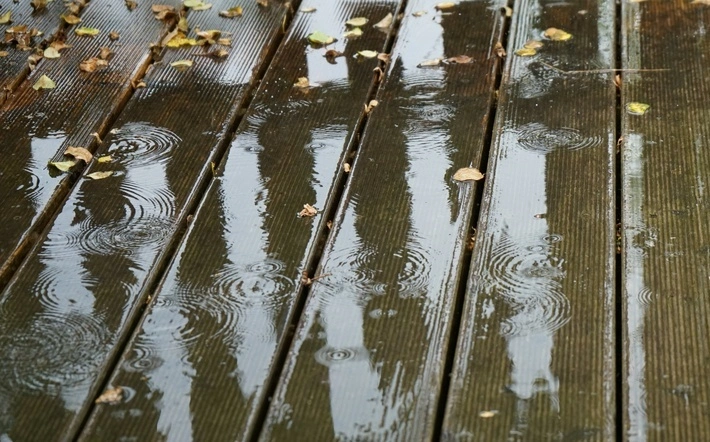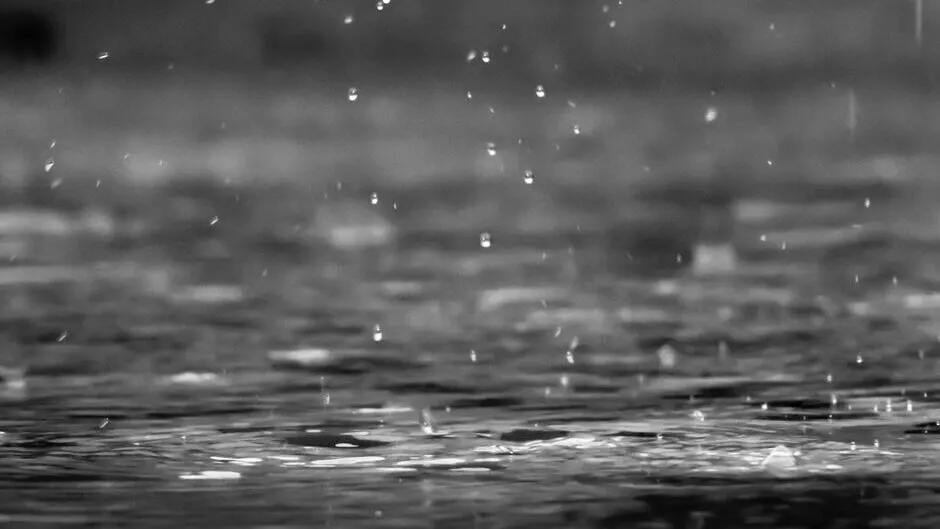Rainwater charges: Costs for rainwater
The rainwater charge is a fee levied by many German municipalities to cover the costs of disposing of rainwater. Rainwater that falls on paved or built-up areas is usually considered wastewater and must be disposed of by the municipalities. The rainwater charge is based on the size of the paved or built-up area and the amount of precipitation that falls on that area.
But what does precipitation actually mean? Precipitation is the term for all forms of water that fall from the atmosphere onto the earth's surface, including rain, snow and hail. In Germany, the average amount of precipitation per year is about 600 to 1,500 millimetres(as of 2023). Since the disposal of rainwater incurs costs, rainwater charges are a way for municipalities to transfer these costs to property owners who have a paved or built-up area.
Who incurs rainwater charges?
Rainwater charges generally apply to all property owners who have paved or built-up areas from which rainwater can run off. This applies to private individuals as well as businesses and municipalities or communities. The costs for the disposal of rainwater are generally incurred by all those who have a connection to the public sewage system.
This charge is levied as part of the sewage fees and is usually part of the service charge bill for rented flats. The fees usually have to be paid semi-annually or annually, depending on how it is regulated in the respective municipality.
There are no exceptions for the rainwater charge. Every property that has paved or built-up areas that drain rainwater must pay the fee. However, there are ways to reduce or avoid the fees, such as by installing rainwater harvesting systems or using infiltration systems. Some cities and municipalities also have programmes that offer incentives for implementing measures to reduce rainwater.
How high are the precipitation charges?
The amount of the precipitation water charge depends primarily on the size of the sealed surfaces on a property from which precipitation water can run off. The larger the paved or built-up areas are, the more precipitation water runs off and the higher the costs for disposal. As a rule, the fee is set by the responsible municipality or the local water and wastewater association and can vary depending on the region and municipality.
Another factor that influences the amount of the precipitation water charge is the amount of precipitation in the respective region. As a rule, the higher the amount of precipitation, the higher the costs for the disposal of rainwater.
The costs for water and wastewater can vary from region to region and also depend on the size of the municipality, the infrastructure and the specific tariffs. The rainwater charge is usually part of the sewage charges and is listed as part of the service charge statement for tenants.
How are the charges for rainwater calculated?
The fee is usually calculated on the basis of a percentage of the wastewater charge. The wastewater charge itself is often calculated on the basis of drinking water consumption, as it is assumed that higher water consumption usually also leads to higher wastewater generation.
In order to calculate the precipitation water charge accurately, the area of sealed or built-up surfaces on a property must be determined. There are usually special calculators or formulas for this purpose that make the calculation easier. In some municipalities, special measuring devices can also be used to record the exact amount of rainwater runoff.
Save on rainfall charges: Here's how
Below we point out different possibilities to save on rainfall charges in the future.
1. collecting rain
One way to save on rainwater charges is to collect and use rainwater on your own property. There are various methods for doing this, such as installing rain water tanks like rain barrels or underground cisterns. These can collect and store the rainwater so that it can later be used for watering plants, cleaning or as service water.
By using rainwater, not only can the rainwater fee be saved, but also mains water and thus costs for the water supply.

2. Let rainwater seep into the garden
Another way to save on rainwater charges is to let rainwater seep into the garden. In this case, the rainwater is not discharged into the sewage system, but infiltrated on the property. This has the advantage that the water gets into the soil, thus supporting groundwater formation and soil moisture.
There are various options for allowing rainwater to seep into the garden. One option is to create an Infiltration pit or depression that absorb the water and allow it to seep into the ground. Aditionally the paved areas should also be able to absorb the water permeably and allow it to seep away.
The size of the Infiltration pit depends on various factors:
- the nature of the soil
- the size of the property and
- the expected rainwater volume.
However, care must be taken to ensure that rainwater infiltration does not cause damage to buildings or the surrounding area and that possible regulations of the municipality or city are observed.
What are sealed surfaces?
Sealed surfaces are surfaces that are not permeable or only partially permeable to rainwater or other liquids. This means that the water cannot seep into the ground or can only do so to a very limited extent, but runs off on the surface.
Typical examples of sealed surfaces are, for example, asphalted or concreted roads and squares, buildings with large roof areas, car parks, terraces or even footpaths. Paved driveways or garage access roads also count as sealed surfaces.
Sealed surfaces often have a negative impact on groundwater and the environment, as rainwater cannot seep into the ground and thus does not contribute to groundwater formation. Instead, rainwater runs off the surface and can pick up pollutants from the environment and enter water bodies. For this reason, the option of breaking up sealed surfaces or making them more permeable is often recommended in order to allow rainwater to seep into the ground and thus also contribute to environmental protection.
Is the rainwater fee tax deductible?
Rainwater charges are generally not tax-deductible costs, as they are a municipal charge. There is also no rainwater tax in Germany.
However, the costs of installing rainwater harvesting systems can be tax-deductible in some cases. However, this is an investment measure that is usually not directly related to the rainwater charges.
However, it is advisable to consult a tax advisor if you have questions about the tax deductibility of costs, as this depends on individual circumstances and no general statement can be made.





